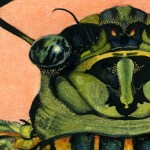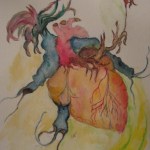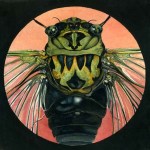
Want to see how Facebook's deafult settings have crept over time from mainly private to overwhelmingly public? Matt McKeon's got you covered with a very nice year-by-year data visualization. By 2010, the only things that aren't public are birthday and contract information. Was this what Zuckerberg had in mind years ago, when he said users were dumb ******s for sharing so much personal data with him? Hmmmm. . .
*yes, it's a pun. I do indeed sink so low, occasionally.
I spent some time today chatting with Sam Bayard of the Citizen Media Law Project. It occurred to me that some of you who are newer to blogging might not know they have an invaluable database of articles on legal issues related to online publishing - a good resource to bookmark! (See, for example, "legal protections for anonymous speech".)
Via Jennifer Ouellette, a wonderful TED talk by Dan Meyer, high school math teacher, which is about so much more than math or education. It's about how we think about problems in the real world, how we handle ambiguity, and the problem with impatient problem-solving: "what we're doing here is taking a compelling question, a compelling answer, but paving a smooth, straight path from one to another, and congratulating our students for how they step over the cracks along the way".
In his words, Meyer "sells a product to a market that doesn't want it, but is forced by law to buy it." So he's…
Fox News is taking quality to a whole new level this afternoon. (I know, I know, it's my fault for accidentally clicking on their site. I deserve what I get.)
Regardless, congrats to the new Queen Minister!
My friend Jacob just sent this to me and I had to pass it along.: it's a Bag End dollhouse by Maddie Chambers, apparently one of the most patient people in the world. Amazing and adorable! Can I have a full-sized one please?
Recently a reader commented that my painting, Fall:The Cicada, is a little, um, insect-y. Yes, I have a propensity to paint insects-lots of 'em. I have a box of dead ones just waiting for the day I get around to painting them, so I thought I'd explain why. About the same time, I was encouraging a friend who is also an artist to start blogging about her works-in-progress. I don't have any works-in-progress at the moment, but I figured why not follow my own advice, so here you go: a post about painting insects.
I enjoy insects as subjects because they're like tiny jewels, each one with many…
Via reader-musician John Danley, I learned of Lori Anne Parker's "Watersketch Prospectus," "a yearlong project and response to a personal health crisis requiring heart surgery." As Danley observes, "her work is related to aesthetic responses to trauma."
After suffering a spontaneous coronary artery dissection, Parker was unable to work with her usual oils, and branched out into watercolor as a medium. Her weekly sketches, each completed in an hour and a half or less, are free-flowing fantasies filled with networks of vines/veins and anatomically inspired botanical imagery. They have a…
Civility: wow, everybody's concerned about it now! Here's our president a couple of days ago:
The problem is that this kind of vilification and over-the-top rhetoric closes the door to the possibility of compromise. It undermines democratic deliberation. It prevents learning -- since, after all, why should we listen to a "fascist," or a "socialist," or a "right-wing nut," or a left-wing nut"? It makes it nearly impossible for people who have legitimate but bridgeable differences to sit down at the same table and hash things out. It robs us of a rational and serious debate, the one we need…
So much to read this week! Here are a couple of quick links of interest:
Carl Zimmer on comparing the E. coli genome to Linux code:
A number of scientists have begun to compare natural and manmade networks. A lot of the same rules appear to be at work in the growth of the Internet, airport connections, brain wiring, ecosystem food webs, and gene networks. But very often, scientists are finding, it's the differences between natural and manmade networks that are most revealing, offering clues to the different ways in which people and evolution build complex things.
And the NYT Magazine has an…
The UK History of Advertising Trust has initiated a ghostsigns archive to document old painted billboards - the kind you see on the sides of brick buildings, fading away unnoticed. These old signs are being destroyed daily (by gentrification, new construction, and new billboards being put over them), and very few new ones are being created (for an example, see my previous post on the artists behind the Stella Artois mural in NYC).
Unfortunately, preserving such signs permanently is difficult - and, some argue, not even desirable:
The core dilemmas are that they are not architectural…
As I mentioned last week, I spent yesterday on a panel/in a workshop at Harvard's Kennedy School, "Unruly Democracy: Science Blogs and the Public Sphere." It was an excellent day - I met many interesting people and had some great conversations. Plus, I got to meet Dr. Isis in the flesh! Woohoo! Thanks to the Intersection's Chris Mooney and everyone at the Kennedy School's Science and Technology Studies program for putting on such a great event.
Obviously, I can't speak for all science bloggers, and I didn't even try. But what I did endeavor to convey in my brief talk was the difficulty of…
[U]nlike artists or musicians, we do have competitors. Only van Gogh can paint like van Gogh and the uniqueness of Beethoven's music is immediately recognizable. Their contributions are irreplaceable. But individual scientists are not irreplaceable. There are many, many examples of important discoveries being made simultaneously by several individuals or groups working independently. The social scientists have all manner of explanations for this "phenomenon" but the bottom line is this: If I am not the first to discover, almost certainly someone else will be. No wonder we are so desperate to…
Over at scientificblogging.com, Mark Changizi has a post about "unconstrained scientific craziness":
I criticized avant-garde artists for their craziness, all the while explicitly aiming for craziness as a scientist! In effect, I was teaching my students to be avant-garde scientists, and trying myself to be an avant-garde scientist, yet somehow failing to notice that this outlook had transformative implications for my view of avant-garde art.Just like me, avant-garde artists are trying to be "crazy", hoping to make that next non-incremental advance. There's a method to the madness: the…
These are images of cells from GE's IN Cell Analyzer Competition 2010:
every year we invite IN Cell Analyzer users to submit their images to the IN Cell Image Competition. This year we have received over 70 fabulous images from researchers' worldwide, working in areas such as toxicology, malaria, dermatology, obesity, cancer and neurology.
See the full-size images in all their fluorescent glory, and the winners from 2009, at GE's flickr page.
An urban art installation proposal by Nick Rodrigues would install sculpted pigeons in Cambridge, MA, each equipped with a "pico projector" that would project a live Tweet stream. According to the Artsake blog,
"Gossiping Birds" is a proposal by Nick Rodrigues (MCC Sculpture/Installation Fellow '07), one of ten artists chosen as finalists for a Public Art Commission in Cambridge, an initiative of the Cambridge Arts Council. The project called for site-specific public art proposals for the Cambridge Street Corridor, a one-mile stretch from Inman Square to Lechmere that spans three distinct…
I wanted to let you all know that I've put two framed original watercolor paintings up for sale on etsy: "Bee and Echinacea" (sold) and "The Cicada" (still available).
These are likely to be the only original paintings I'll have for sale for some time to come, so if you want a BioE original this is your chance. :)
Yesterday was a great day for space images. First, celebrating Hubble's 20th anniversary (via Wired):
This craggy fantasy mountaintop enshrouded by wispy clouds looks like a bizarre landscape from Tolkien's "The Lord of the Rings" or a Dr. Seuss book, depending on your imagination. The NASA Hubble Space Telescope image, which is even more dramatic than fiction, captures the chaotic activity atop a three-light-year-tall pillar of gas and dust that is being eaten away by the brilliant light from nearby bright stars. The pillar is also being assaulted from within, as infant stars buried inside…
FYI: I'll be appearing next Friday on a panel as part of the "Unruly Democracy: Science Blogs and the Public Sphere" workshop sponsored by the Program on Science, Technology and Society at the Harvard Kennedy School, the Shorenstein Center at the Harvard Kennedy School, and the Knight Science Journalism program at MIT. I'll be appearing with Chris Mooney of the Intersection/Discover on a panel called "Science and the Web."
Now, if you've read the blog for a while, you'll know I'm not a new media cheerleader. I do love new media, but I also have many concerns about its evolving mores. So in…
The Anachronism (Full Film) from Anachronism Pictures on Vimeo.
The full length version of The Anachronism, a short film by Matthew Gordon Long, has been released online. The only thing wrong with it is that it isn't longer. Give yourself a treat this weekend, enjoy the steampunk, and, if you're like me, reminisce about taking a textbook out into the forest to name things in Latin! I'll just give you one warning: this is a filmmaker who, unlike many others, knows how to let a mystery rest undisturbed. Yes, the film leaves you curious as heck, but in the end, I think that's a much better…
Artist Balint Zsako does remarkable things with collage and biological/anatomical imagery. By embellishing his classically posed subjects with a plethora of arms, swaddlings of restrictive clothing, or provocatively opened fruit, he plays with our expectations: portraits become faceless, the suggestively private becomes public, and old-fashioned art becomes new again.
Whether it's we viewers stealing glimpses into bodies or between draperies, birds stealing seeds, or grasping hands matched perfectly to exogenous limbs, fruit, or instruments, Zsako's feverish imagery makes the very process…









